At a glance
Expert’s Rating
Pros
- Rich, robust stereo sound from compact, attractive, powered speakers
- Direct connections to almost every popular music-streaming services (except Apple Music)
- Easy to operate with onboard controls and/or the dedicated remote
Cons
- Stereo only, there are no surround-sound options for home theater
- Opting in to DTS Play-Fi presents a higher learning curve
- No EQ controls
Our Verdict
Spiffy sounding and sleeky styled, SVS’s second-generation powered streaming speaker system delivers a big bang for your bucks.
Price When Reviewed
$899.99
Best Prices Today: SVS Prime Wireless Pro
$899.00
Sonically rewarding, well featured and handsome, the SVS Audio Prime Wireless Powered Speakers Pro is a new-age, two-piece audio system ready and able to serve up high-res streaming services with a strong sense of musical presence and purity. It can also host analog and digital audio components, and it sounds terrific bringing home free internet radio stations from around the world.
Minimalist in design, maximized in flexibility, and with a “Pro” suffix to designate its status as a second-generation product, this system is designed to compete with considerably more expensive competitors and is a solid value at $899.
RCA stereo inputs allow you to plug in a CD transport or a (pre-amped) turntable, while an HDMI port with ARC/eARC support will make buyers exceedingly happy as home theater speakers flanking a big-screen TV. Baz Lurhman’s Elvis really rocked these hound dogs!
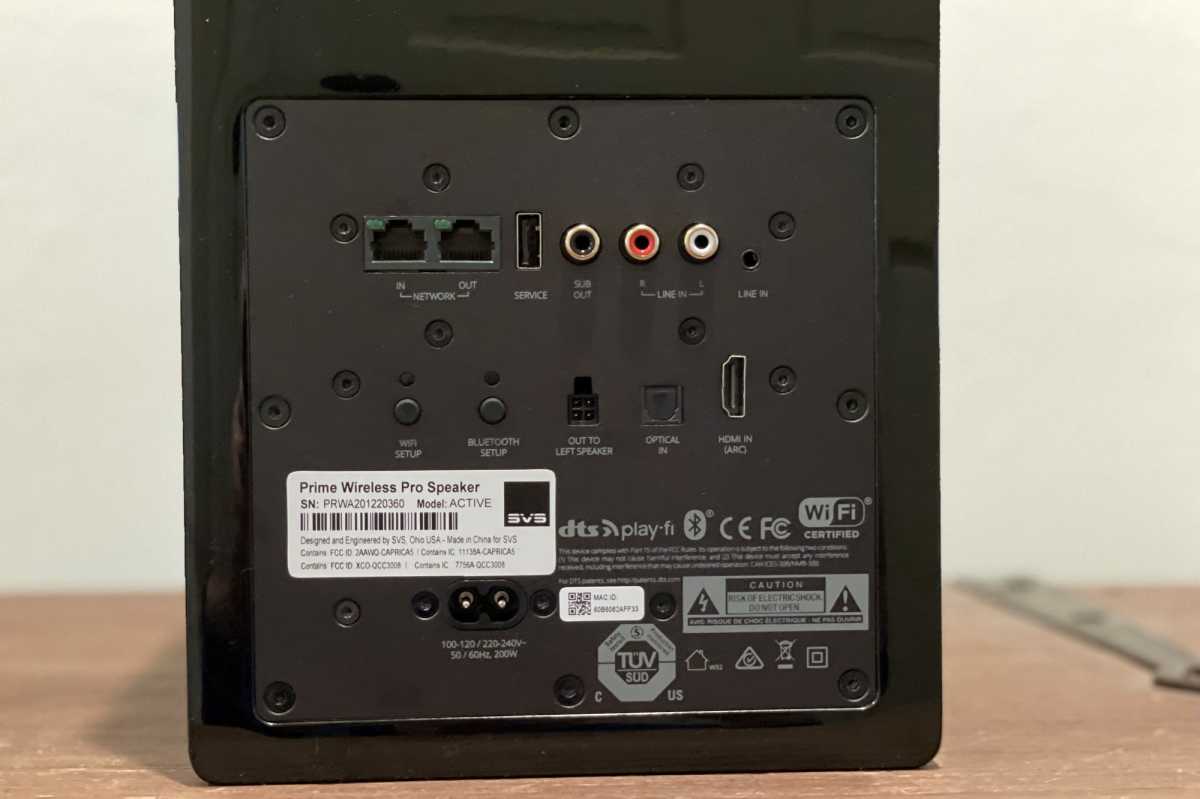
The SVS Prime Wireless Pro doesn’t limit you to streaming services, you can connect virtually any digital or analog source to the back of the right-hand speaker housing the system’s amplifier and other electronics.
Jonathan Takiff/Foundry
Offered in glossy piano black or white finishes, these compact but chunky 12-pound music boxes are easy to set-up with dual-band 2.4-/5GHz Wi-Fi or hardwired ethernet connections (the latter option is more stable, if you can deal with the wire) to your home internet service. A single power cable connects to the electronics, which are all packed into the right-hand speaker.
A supplied 3-meter (almost 10-foot) interconnect pipes the other channel to the passive left-hand speaker. You can opt for 15- or 20-foot connecting cables, but TV sound is optimized for stereo effects with a phantom center channel for dialogue, and a 10-foot speaker spread is ideal for that.
The DTS Play-Fi multi-room audio system running this show initially gave me some fits and starts. But with a little knowledge gained, I’ve grown (mostly) accustomed to its quirks. For those interested, I explain how to resolve DTS Play-Fi issues with the SVS Prime Wireless Pro (and other gear) in this separate article. The Prime Wireless Pro is also compatible with Apple AirPlay 2 and Google’s Chromecast audio-streaming technologies. More on that in a bit.
Upgrades in the 2nd-gen SVS Prime Wireless Pro
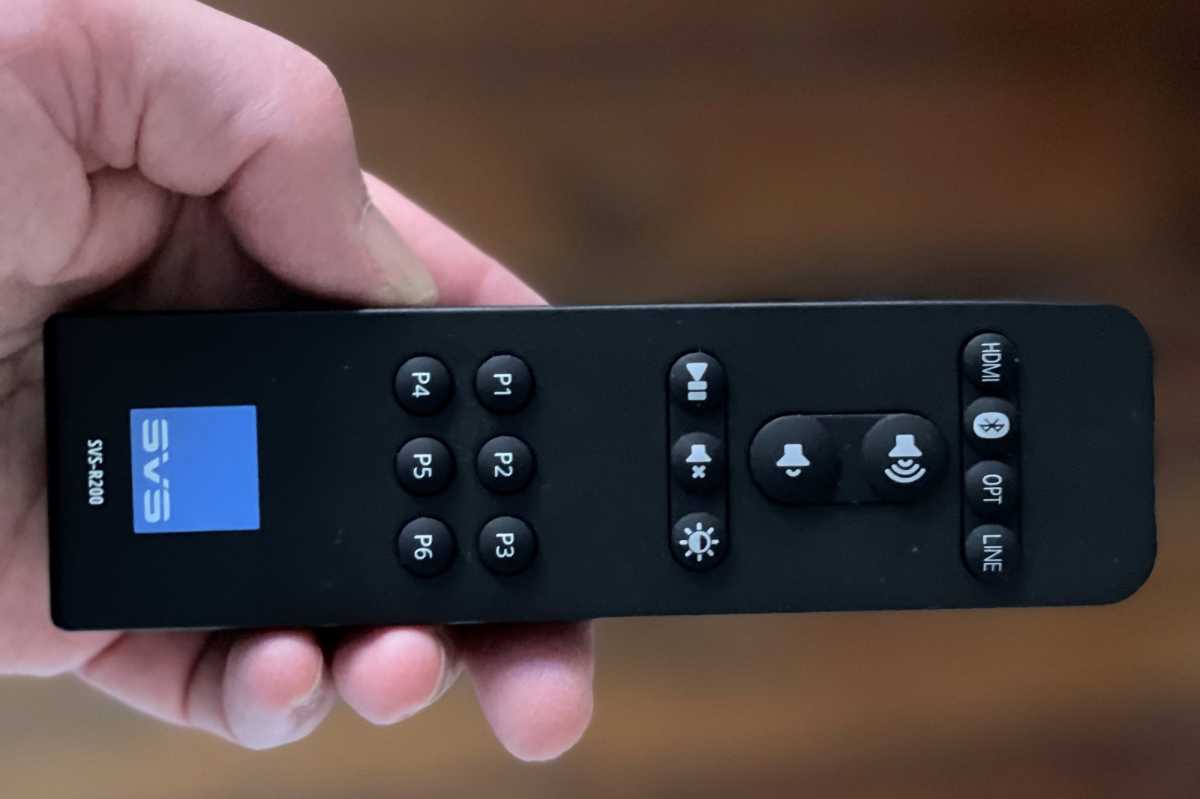
The SVS Prime Wireless Pro’s IR remote control has six “favorite” presets, but the system can be slow to respond to commands such as volume changes and input switching
Jonathan Takiff/Foundry
Operational improvements to the second-generation SVS Audio Prime Wireless Pro include a much-requested IR remote control and an OLED Front Panel display on the front of the right-hand speaker. Two control knobs and six backlit preset buttons are below that display. So, now you don’t need to open the Play-Fi app on your Android, iOS, or Windows device to dim/brighten the screen, change input, raise/lower the volume, or kickstart one of a half dozen favorite (i.e., pre-programmed) streams, playlists, albums, or podcasts. Just tap and go, either on the control panel or from your easy chair.
The speaker display confirms your moves and shows (to a degree) what’s playing. Better yet, those presets pull in content directly from the web, without the roundabout rigamarole of normal Play-Fi content acquisition and distribution (allow me to once again refer you to my Play-Fi troubleshooting article).
Does the 2nd-gen SVS Prime Wireless Pro need a subwoofer?
After 24 years, SVS Audio remains best known for its value-conscious, high-performance subwoofers. As such, the SVS Prime Wireless Pro’s redesign represents a bit of irony; maybe even a bit of the company stabbing itself in its own foot: For the content I most often take in—well-engineered alt-rock, twangy Americana, acoustic jazz, classical, world music, and soundtracks of TV shows and movies that already emphasize airiness and (mostly) avoid super low notes—the SVS Prime Wireless Pro was perfectly satisfying without a sub, especially with the speakers properly positioned against a backing wall or in a corner to exploit the bass ports on the back of each enclosure. And that’s how I did most of my listening tests.
All that said, I’m sure SVS would love for buyers to add one of its powered subs to this set. When the system detects one plugged into the RCA sub output on the back of the right-hand speaker, it activates a low-pass filter to route sonic content below 80Hz to your bass box.
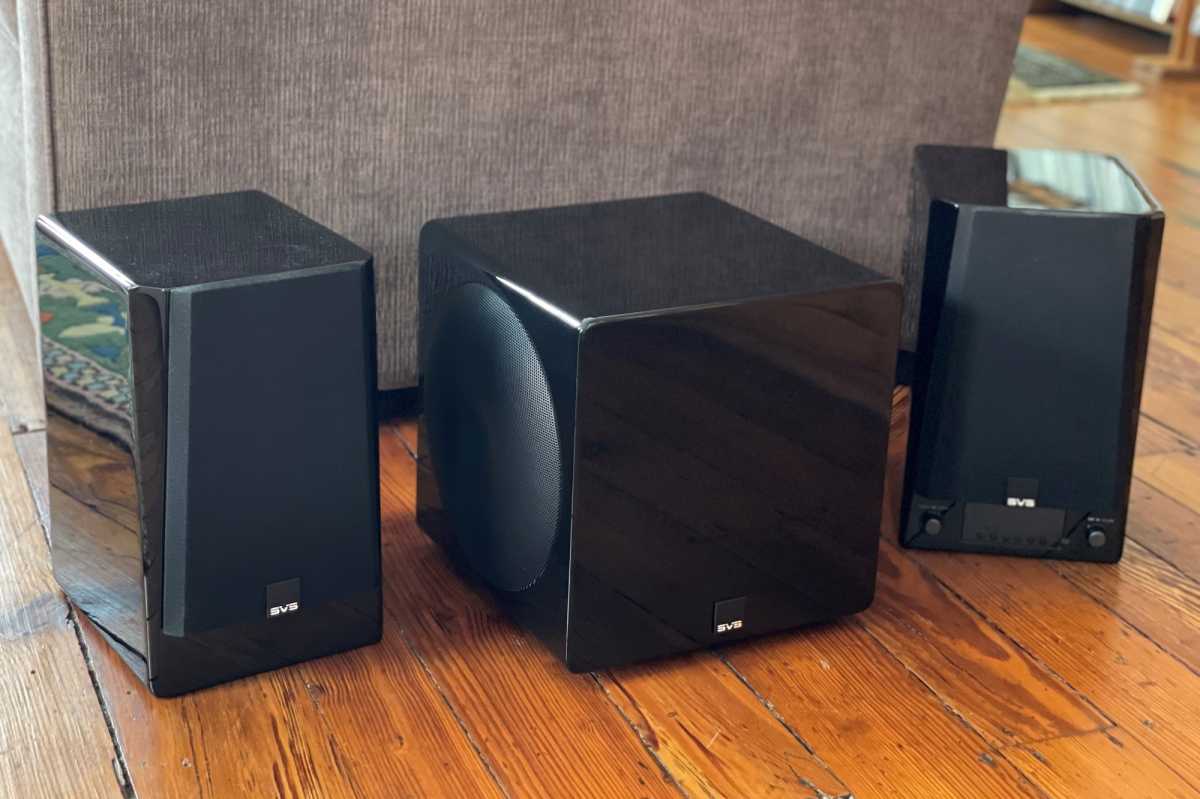
You can supplement the SVS Prime Wireless Pro with a subwoofer (the manufacturer sent its boomin’ SVS 3000 Micro Subwoofer for us to check out), but you might find the system to be perfectly adequate without bass reinforcement.
Jonathan Takiff/Foundry
Indeed, the company provided one of its SVS 3000 Micro Subwoofers for this evaluation. The compact beauty perfectly matches the speaker system’s proportions and glossy cabinets, and its dedicated amplifier sending 800 (RMS) watts to its twin 8-inch drivers can make a dramatic difference with the right tunes. That’s especially true with densely recorded, hard-stompin’ content such as the newly uncovered, jam-tastic 2005 performance by the Allman Brothers Band, Live from Warner Theatre, Erie PA, and the latest merger of mature hip hop, jazz, and neo-soul from Robert Glasper and friends, Black Radio III.
A serious sub like that doesn’t just serve up deeper, bigger, and tauter bass response. It also relieves stress on and improves the clarity and dynamics of the primary amplifier and speakers. In the Allman Bros. example, it opened more breathing room between the rhythm players and the snaking guitar lines of Derek Trucks and Warren Haynes.

The display on the right-hand speaker shows the song title if its playing from a music-streaming service (to the right is a KEF LSX II speaker we make a comparison to).
Jonathan Takiff/Foundry
SVS Prime Wireless Pro specifications
The SVS Prime Wireless Pro’s onboard Class D amplifier produces 200 watts (RMS) of power, doling out 50 watts to each driver in bi-amplified fashion. SVS says its tweaking to this second-gen product extends bass frequency response down to 42Hz (versus 52Hz in the original model) and tops the high end at 25kHz (both specs +/- 3dB).
The 5.25-inch polypropylene mid-bass drivers in each cabinet certainly kick more butt than the 4.5-inch drivers in the first-gen system, but just having more interior cavity space helps build that deeper rumble, too. The Pro’s cabinets have grown by an inch to 1.5 inches in every direction and now measure 11.61 x 6.09 x 8.96 inches (HxWxD). You can still fit these stylish things on a bookshelf or deep windowsill, but wall mounts and custom stands are available options. Their modernistic cloth grilles can be removed to present a techier, studio monitor look whilst also brightening and broadening sound dispersion a tad.
The 1-inch aluminum dome tweeters in the Pro are a holdover, but the rear ports have been refined in design and location. You’ll still want to carefully consider where you place the speakers, however; as I’ve already mentioned, setting them against a wall or in a corner will significantly enhance bass response. SVS has also adjusted the system’s digital signal processing. I suspect this to be a contributing factor to the robust contouring of internet radio feeds and the TV soundtracks coming through the HDMI port. You’ll also find digital (optical Toslink) and analog (both 3.5mm and stereo RCA) inputs on the back of the right-hand speaker. SVS is so confident of its sound equalizing—and/or concerned that consumers could screw it up—that it doesn’t offer any user-accessible tone controls. You could use the EQ features on your smartphone when throwing sound to these speakers via Bluetooth 5.0 (both the AAC and aptX codecs are supported). Another solution would be to plug in a sub and activate its separate controls for fleshing out the nether regions of sound, as light or large as you wish. SVS’s own subs work with a dedicated app that enables easy adjustments from your listening spot.
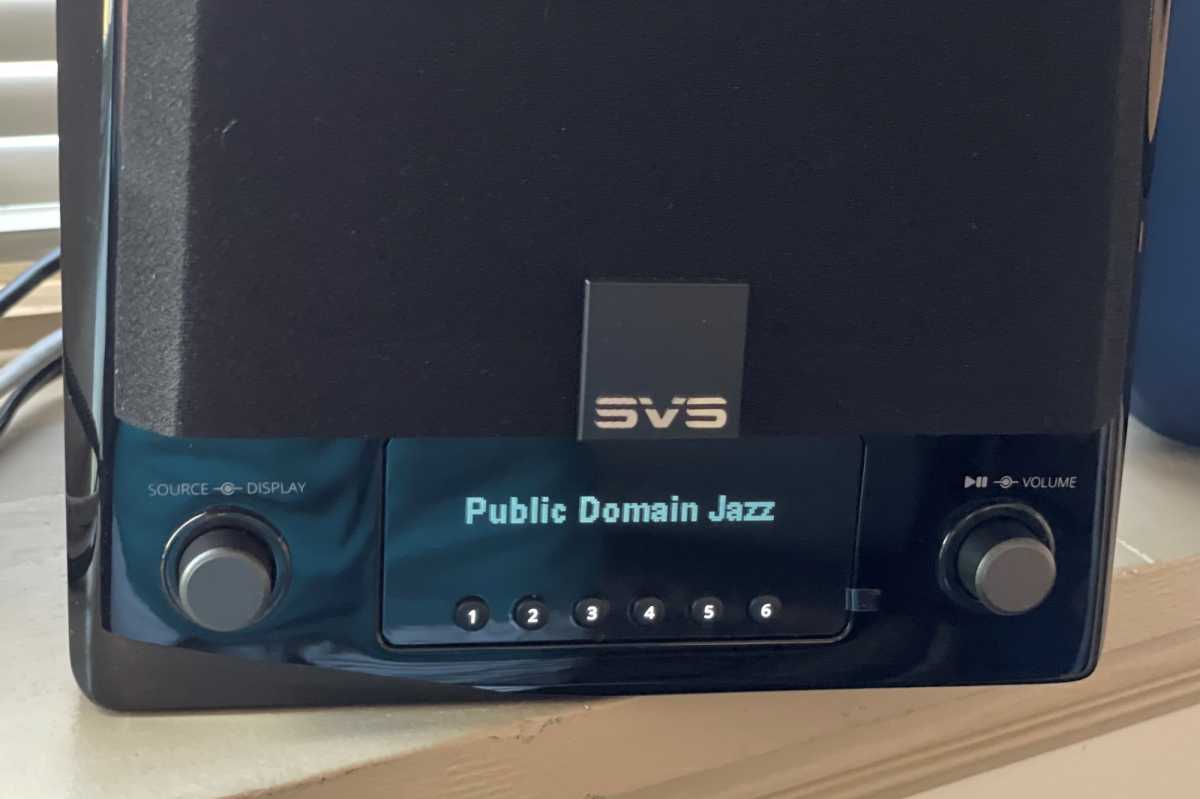
When you stream music from a service like vTuner, SiriusXM, or iHeart Radio, the system displays only the name of the radio station
Jonathan Takiff/Foundry
Which music services does the SVS Prime Wireless Pro support?
The SVS Prime Wireless Pro is outfitted with a 24-bit/192kHz DAC to deliver high-res lossless content from Amazon Music HD and Qobuz, plus the lossless FLAC “CD-quality” version of Deezer and Tidal. But the system doesn’t “unfold” the ultra-high resolution MQA stage of Tidal Master streams.
One high-res service I often enjoy, Apple Music, is conspicuously absent from the SVS Prime Wireless Pro—natively, that is. That’s Apple’s call, according to SVS, but the system’s support for Airplay 2 and Chromecast lets you stream Apple Music from your iPhone or Android phone to the speakers via Wi-Fi.
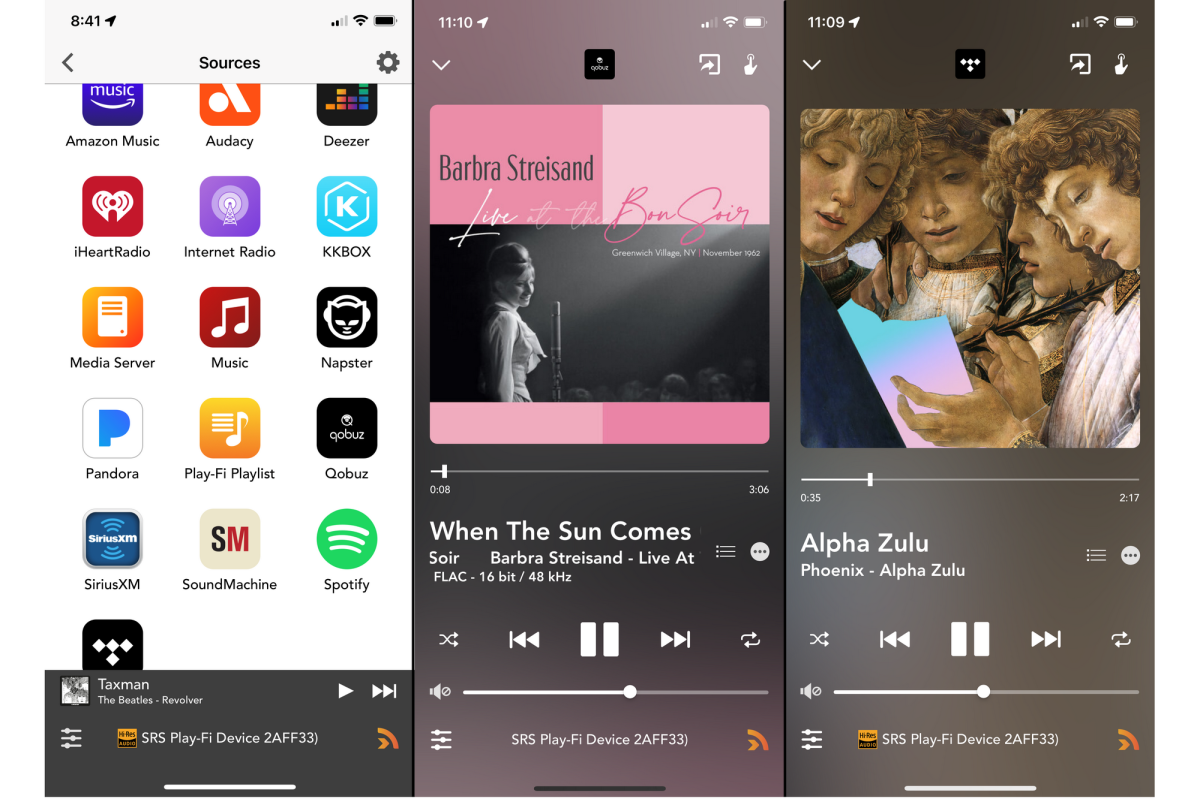
The SVS system supports direct connections to nearly every important streaming service except Apple Music. WIth that, you’re limited to playing tracks previously downloaded to your device.
Jonathan Takiff/Foundry
Lower-res (but still good-sounding) services are also available directly on the SVS Prime Wireless Pro, including Spotify Direct, Pandora, iHeart Radio, SiriusXM, and Napster. You can also listen to tens of thousands of internet radio stations aggregated by the (unbilled) folks at vTuner. There’s no FLAC decoding of stations in vTuner land (stations that offer FLAC streams, that is), nor support for the track-identifying metadata that some stations insert and that the station-aggregating rival TuneIn Radio does pass along for user viewing.
The 320Kbps MP3 tracks that Linn Classical and Linn Jazz stream sounded extra-dandy through these speakers and offered me an easy way of comparing the SVS’ performance against other rigs. To be sure, the 50-percent-more-expensive KEF LSX II powered speaker system I reviewed recently made guitar notes dance a mite more gracefully in Martin Taylor and Chet Atkins’ lovely rendering of “Here, There and Everywhere,” from the Linn label album Portraits, and with more discernable hollow-body guitar resonance, too. But it wasn’t a night and day thing; more like 6:30 and 7:00 p.m.
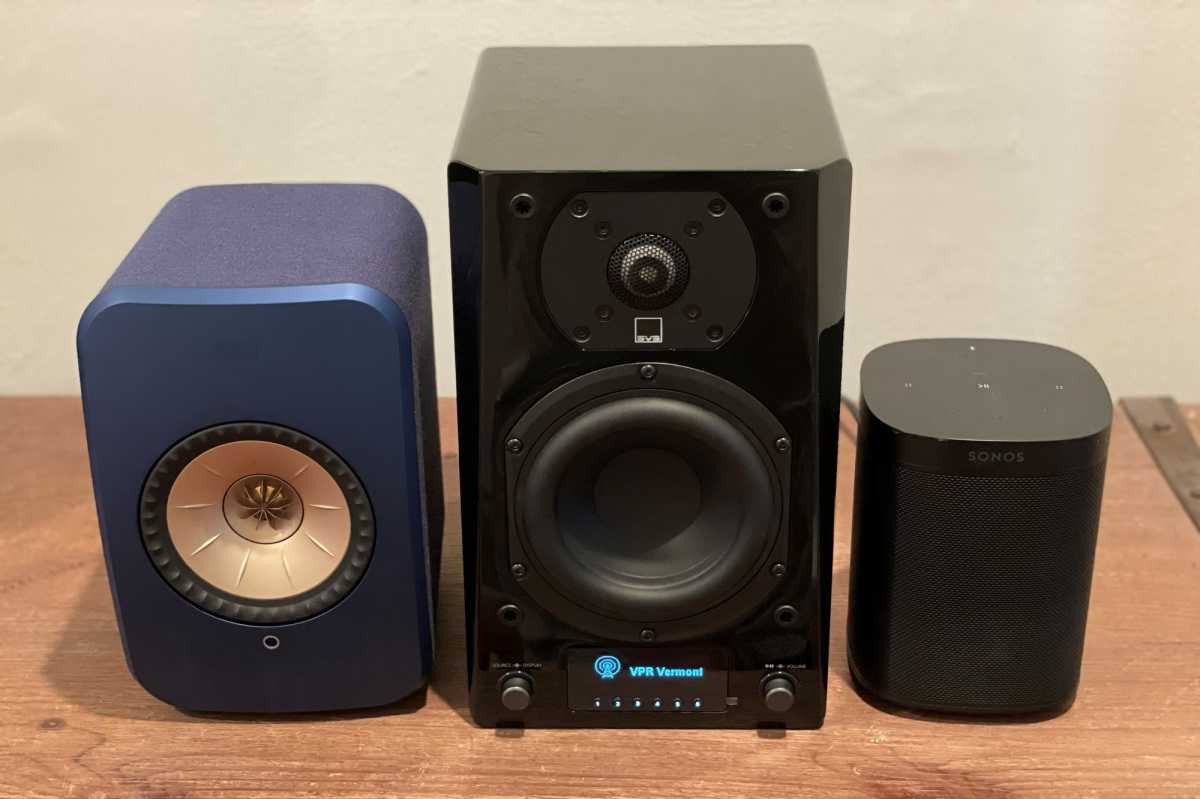
The SVS Prime Wireless Pro plays louder than the pricier KEF LSXII (left), and with better dynamics and clarity than the cheaper Sonos One (right).
Jonathan Takiff/Foundry
I also heard a difference in depth while comparing 16-bit/48kHz Amazon Music Unlimited and Qobuz renderings of Florence + The Machine’s Dance Fever: Live at Madison Square Garden. On the KEF system, the hall sounded larger and the band’s backup singers and string players seemed farther removed—10 steps back, say, rather than three. Otherwise, tone and articulation seemed equally vital on both systems.
Although they’re not in the same price class, I also compared the SVS Prime Wireless Pro to a pair of what are probably the world’s most popular speaker: The Sonos One ($219 each or $438 a pair). The Sonos Ones delivered a likeable sound, but paled in comparison to the larger, livelier SVS set; notably so on another “new” concert release, Barbra Streisand’s Live at the Bon Soir, which has been hiding in the Columbia/Sony vaults since 1962. Young Babs’ belting sometimes verges on distorted on the Sonos (it’s no wonder the recording wasn’t released earlier). Streisand comes off in more kindly fashion—as just artfully bombastic, one might say—on the more nuanced SVS speakers.
Is the SVS Prime Wireless Pro a good value?
I’ve enjoyed my time with the SVS Prime Wireless Pro, despite the befuddling Play-Fi issues I encountered and have since resolved so you won’t have to (more details at this link). High-resolution audio sounds fantastic on this powered speaker system—with or without the help of a subwoofer—and you can play music from a diverse collection of sources and services, with or without wires.
The SVS Prime Wireless Pro is a finely crafted two-channel audio system with a reasonable price tag. It punches way above its weight class.

